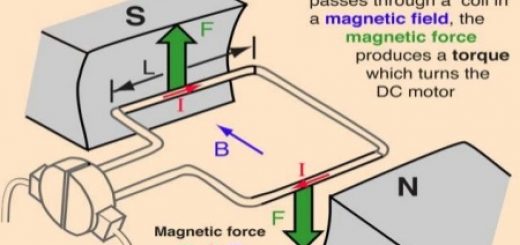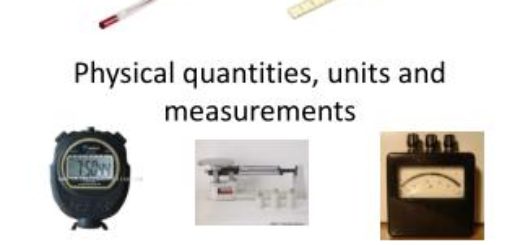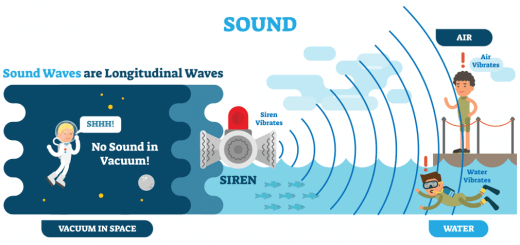Helium-Neon (He-Ne) laser, Main components of a laser and Theory of laser action
The optical pumping process is the excitation of atoms of the active material to generate laser by the optical energy, Helium and neon gases are suitable for the production of gases laser due to the values of their excited metastable states which are very close to each other.
Main components of a laser
Despite the variation in the sizes and types of laser devices, they consist of three common elements, They are Active medium, Energy sources & Resonant cavity.
Active medium
It is the active material that produces the laser ray, It can be:
- Crystalline solids such as ruby.
- Semi-conductor such as silicon crystals.
- A liquid dye such as the organic dyes dissolved in winter.
- Gas atoms such as the mixture of neon and helium gases.
- Ionized gases such as the ionized argon gas.
- Gas molecules such as carbon dioxide gas.
Sources of energy
They are responsible for providing atoms or molecules of the active medium with the required energy for exciting them, From the energy sources used for exciting the active medium.
- Electrical energy: Excitation by electric energy can be done by two methods: The electric discharge by using high continuous potential difference (DC) and this method is often used in gas lasers such as (helium-neon) laser, carbon dioxide gas laser & argon laser, Using high radio frequencies waves (RF).
- Optical energy: Excitation by optical energy, also known as optical pumping which can be done by two methods: By using glowing flash lamps of very high energies such as in a ruby laser, By using a laser beam such as liquid dye laser.
- Thermal energy: Where the thermal effect due to the moving pressure of gases is used in exciting the active medium of the laser.
- Chemical energy: Which is produced due to a chemical reaction to produce laser, like the energy produced from the reaction between the mixture of hydrogen, fluorine, deuterium fluoride & carbon dioxide.
Resonant cavity
It is the container which contains the active material and the activating catalyst for amplification, They are two types which are the External resonant cavity and Internal resonant cavity.
- The external resonant cavity is in the form of two parallel mirrors perpendicular to the axis of the tube, one is a reflector and the other is semi-transparent enclosing the active medium and permitting multiple reflections leading to amplification as in gas lasers such as (Helium-Neon) laser.
- Internal resonant cavity: where the ends of the active material are polished to act as mirrors which are parallel and perpendicular to the axis of the crystal, one is semi-transparent to allow some of the laser radiation to leak out as in solid laser such as a ruby laser.
Theory of the laser action (Laser action)
Laser action depends on forcing the atoms or molecules of the active medium to a state of population inversion, in this state, the number of atoms in the excited state is greater than the number of atoms in the lower state.
State of population inversion is the state where the number of atoms in the excited state is greater than the number of atoms in the lower state, Emission of photons from the excited atoms by stimulated emission.
The emitted radiation by stimulated emission will be amplified inside the resonant cavity where successive reflection occurs between the surfaces of mirrors of the cavity to stimuli other atoms along its path to generate new photons thus amplified radiation is produced by stimulated emission.
From the previous, we conclude that there are different types of lasers:
- Solid lasers such as ruby.
- Liquid lasers such as a liquid dye laser.
- Gas laser such as (helium-neon) laser and argon laser.
Helium-Neon (He – Ne) laser
Construction of He – Ne laser:
- A quartz tube including a mixture of helium and neon in ratio 10: 1 at a low pressure of nearly 0.6 mm Hg.
- Two plane or concave parallel mirrors which are perpendicular to the tube axis, one has a reflection coefficient of nearly 99.5 %, while the other mirror is semi-transparent with a reflection coefficient of 98 %.
- High-frequency electric field or a high DC voltage inside the tube causing electric discharge and exciting the gas atoms.
Operation:
- The potential difference inside the tube leads to the excitation of the helium atoms to higher levels.
- The excited helium atoms collide with the unexcited neon atoms inelastic collisions, Thus, energy is transferred from the excited helium atoms to the neon atoms due to the close energy value of the excitation levels in both atoms, Neon atoms are thus excited.
- The excitation level of a neon atom has a relatively long lifetime (nearly 10−3 s) such a level is called metastable state, Due to the continuous collision between the excited helium atoms and neon atoms, an accumulation of excited neon atoms occur, Hence, a population inversion occurs in neon atoms.
- A group of neon atoms that are excited relaxes to a lower excitation state, In doing so, they emit spontaneous photons, which have energy equal to the difference in energy levels, Then, photons propagate randomly in all directions inside the tube.
- Photons which propagate along the axis of the tube are reflected back by one of the two mirrors in its way, they bounce off inside the tube and can not get out.
- During the propagation of these photons inside the tube between the two mirrors, they may collide with some neon atoms in the excited metastable state, which its lifetime is not yet over, Thus, they stimulate the neon atoms to emit photons of the same energy, frequency and phase as the colliding photon, Thus the number of photons moving inside the tube multiplies.
- The new stream of photons repeats the process and thus, they are multiplied by the lasing action, This is how amplification takes place.
- When radiation inside the tube reaches a certain level, part of it gets out through the semi-transparent mirror in the form of a laser beam, while the rest of the radiation remains trapped inside the tube, to continue the stimulated emission and the lasing action.
- Neon atoms which have relaxed to a lower level, soon enough they lose whatever left of their energy in different forms and finally go back to the ground state, Helium atoms collide again with neon atoms and the cycle repeats.
- The helium atoms which have lost their energy due to collision by neon atoms excited again by the electric discharge and so on.
The metastable energy level is an energy level which is characterized by a long lifetime relatively (10−3 s), It is necessary for laser sources during operation, the active medium reaches the inverse population state which it isn’t required in ordinary light sources, because the base of laser action is the existence of a large number of atoms in a metastable state to be the stimulated emission is the dominant emission.
Mechanism of holography, Laser uses in medicine, computers & military fields



